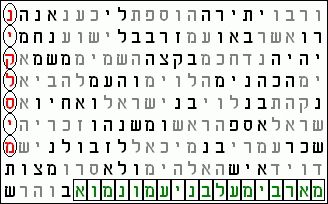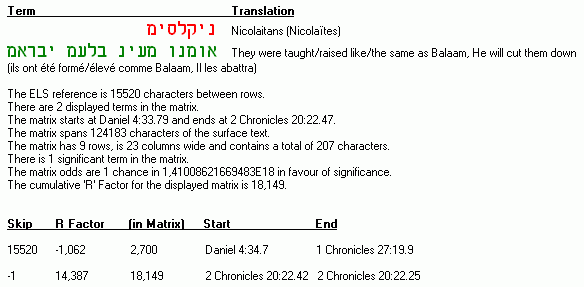
Code by Fab (21/March/2009)
Nicolaitans


15 In this way you also have some who likewise hold the teaching of the Nicolaitans."
Several of the early church fathers, including Irenaeus, Epiphanius, and Theodoret mentioned this group. Irenaeus[1] discusses them but adds nothing to the Apocalypse except that "they lead lives of unrestrained indulgence." Tertullian refers to them, but apparently knows only what is found in St. John[2]. Hippolytus of Rome based his narrative on Irenaeus, though he states that the deacon Nicolas was the author of the heresy and the sect (Philosph., VII, xxvi). Clement of Alexandria[3] exonerates Nicolas, and attributes the doctrine of promiscuity, which the sect claimed to have derived from him, to a malicious distortion of words harmless in themselves. Eusebius (H. E., III, xxix) said that the sect was short-lived.
The common statement, that the Nicolaitanes held the antinomian heresy of Corinth, seems not to have been proved. Another opinion, favoured by a number of authors, is that, because of the allegorical character of the Apocalypse, the reference to the Nicolaitans is merely a symbolic manner of reference.[4]
Cyrus Scofield, in his Notes on the Bible, following dispensationalist thought, suggests that the Seven Letters in Revelation foretell the various eras of Christian history, and that "Nicolaitans" "refers to the earliest form of the notion of a priestly order, or 'clergy,' which later divided an equal brotherhood into 'priests' and 'laity.'"
Barnes notes: "Vitringa supposes that the word is derived from νικος, victory, and λαος, people, and that thus it corresponds with the name Balaam, as meaning either lord of the people, or he destroyed the people; and that, as the same effect was produced by their doctrines as by those of Balaam, that the people were led to commit fornication and to join in idolatrous worship, they might be called Balaamites or Nicolaitanes --that is, corrupters of the people.
So
I decided to search for the best meeting of the terms "Nicolaitans"
and "Balaam" (for the spellings, I used the Hebrew
ones found in Franz Delitzsch translation: http://www.kirjasilta.net/ha-berit/Haz_ln.2.html)
in the Tanakh and found this very significant matrix.
The main
term "Nicolaitans" didn't yield any interesting extension,
but Balaam (shortest skip in the whole Tanakh = -1) could be
extended to "they were taught the same as Balaam, He will
cut them down", a 18 letter term with a skip of -1 then!
Several things are interesting in this term, 1) its content is quite
relevant, and 2) all the verbs are plural, like the main term.